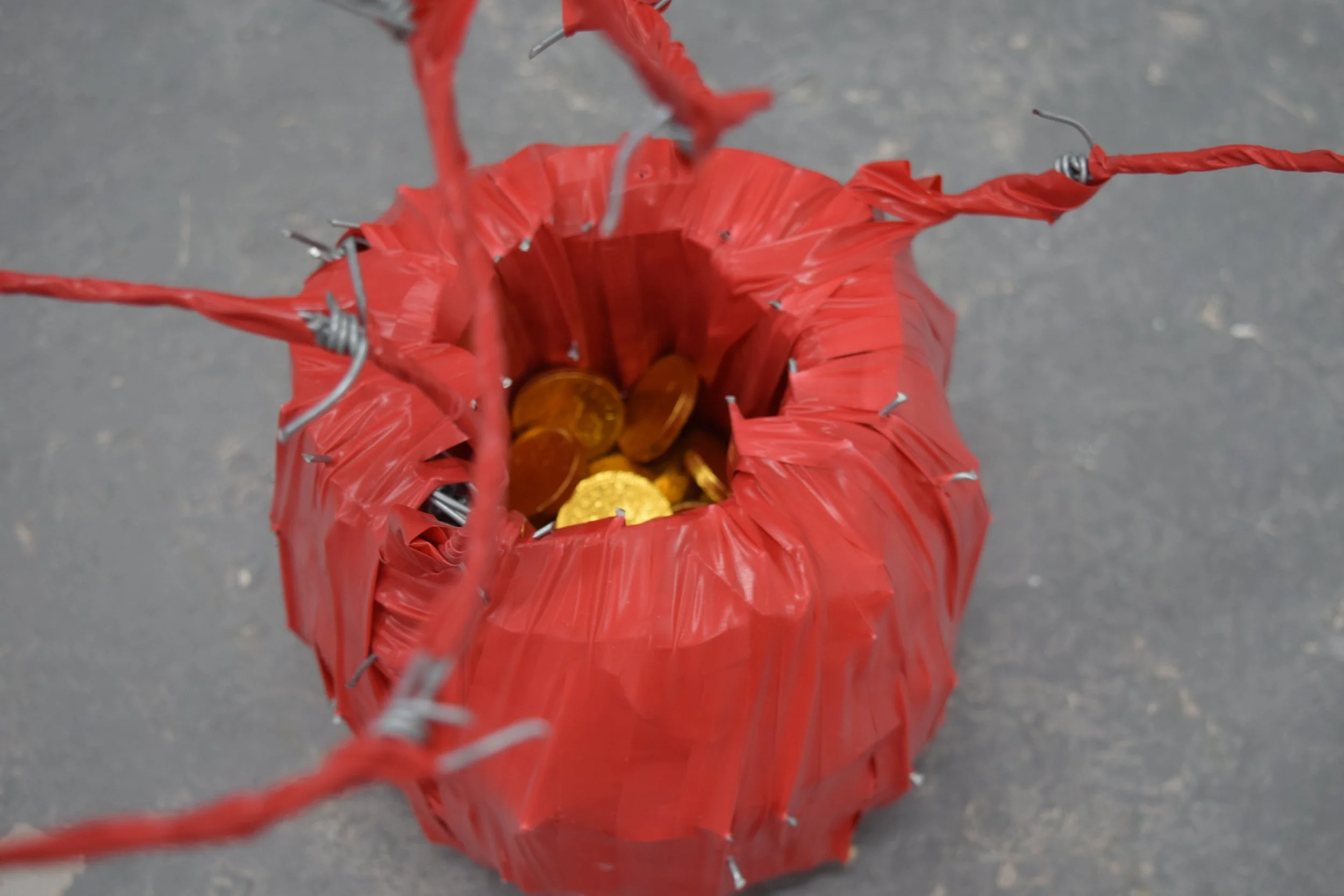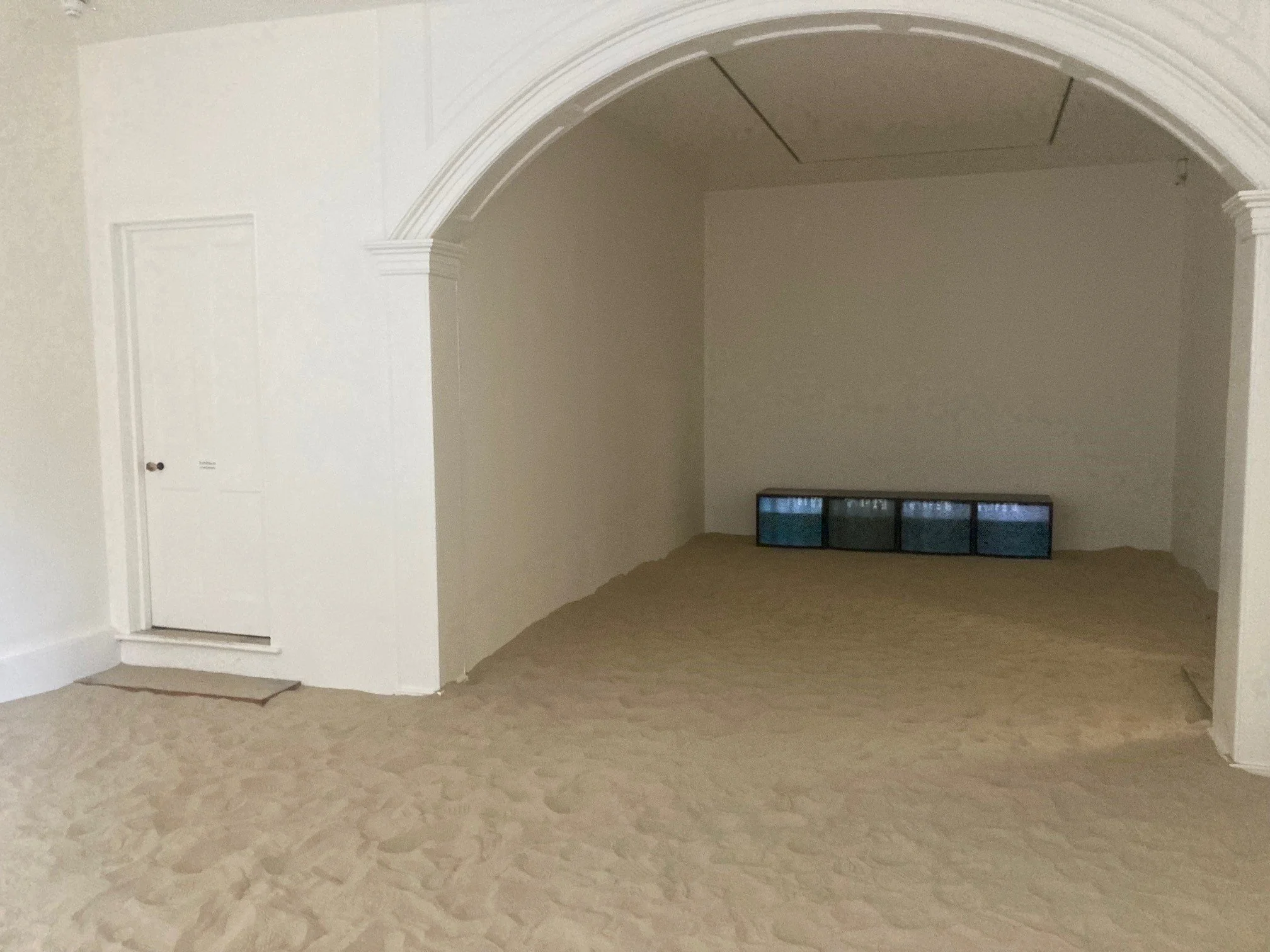A New Dawn, A New Day
Panel discussion Q&A and email interview with Jacob Talkowski. Also on the panel: Rana Begum, Mark Wallinger, Osman Yousefzada, Pallas Citroen
Talkowski, Deller, Culver
Wallanger, Parris, Turner, Bao, Ashley, Rampage, Robertson, Begum, Trotzig
The panel discussion is mostly about economics of being an artist, benefits, spaces, work and labour.
I ask: ‘you’ve used the word monumental about four times in the panel discussion. When you say that, are you referring to ‘bigness’ or … the monument is about memory but also Catriona you’re monument is about future projection. So what is that relationship now?’
Was fielded by Mark Wallinger & Catriona Robertson & Pallas Citroen. Wallinger said he has done monuments and public space is .. interesting. He points out that his film at the opening was about the Mound at Marble Arch by Westminster council and architects, and questions Westminster councils approach to monument. That the Park Lane run with the horse balancing on its nose is bizarre. Catriona says that assemblage is a postmodern kind of monumentalising, from waste. Citroen says she just means its big.
Interview with JT:
What is ‘brick-ness’ to you? (your term I think)
Brick-ness is more of a loose gesture at a thing than a concrete term. When I say brickness in reference to my takeaway container works, I’m thinking about the scale of the unit, and the brickweave stacking, giving the works a kind of pseudo brick-esque feeling. But this isn’t super easy to pin down, Donald Judd’s vertical rectangle stacks for example don’t really have a brickness, despite being a rectilinear unit in-repeat. William Braithwaite’s concrete cube stairwell works however, definitely do have a brickness. Glen Ogdens ‘lay and unlay’ performances are literally bricks being stacked, but, something about this feels like it isn’t a brickness, perhaps in being so literal, it becomes more about brick, rather than the ness. So in this, perhaps brickness has to be one step back, and point towards.
What is monumental about these brick/takeaway works? Perhaps that’s not a word you would use. Or perhaps they only have monumental ‘qualities,’ if so which of those might that be present, or absent?
It’s funny, someone once told me they’re monumental works because they’ll endure, the containers will be in the environment forever (I think they meant this as a jab at utilising something plastic? Again, I think some audiences assume I use fresh boxes each time and throw the works away when they’re done more as if they were set pieces than artworks, if that makes sense).
I think there’s definitely some kind of monumentality being played with in them, especially as they get larger and larger. Within my own practice -and website actually- I divide the container works into two categories: Architectural, and Waterscapes. The waterscape works don’t ever really feel that ‘monumental’ (whatever that may be) but the architectural ones, especially as they get larger, do. In that, I think it’s the simple block shapes that give an inherent symmetry that then keys towards something… plinth-y in the public realm. Densification, for example, felt very monumental, and was the work which to this day used the most containers despite being only a 2m cube. There was a sense of weight to that cube though, that made it feel quite serious- I believe the column currently on show is doing something similar, where by touching the ceiling it feels strong, more robust than it is. There’s a symmetry and a scale there, but that carries a sense of weight and density that feels monumental.
What’s interesting to me though, isn’t that they key to monument, but that they feel monumental without feeling as though they’re declaring a power or superiority to be celebrated as so many of our statue based monuments are. I think this is because they do something similar to how I describe brickness- they’re just able to stand back a little bit and wink-wink nudge-nudge and recognise the value of the object that makes it, and dodge monument by being close enough to poke it.
You mentioned a certain ‘tweeness’ to the containers. Also that they have connotations of seaside, wave forms, in this arrangement. Clearly they are acting like bricks, some kind of stand-in. But they are also a readymade, sculptures made of a ‘real’ object (if not a traditional ‘material’), do you think about how they are ‘deprived’ or ‘elevated’ from their intended use?
This is part of the game of the works in my mind, and where art-audiences tend to show their asses. It’s part of the ‘aha’ as to how these works interrogate value at their core. For me- I love a takeaway, I used these little double tab yellow boxes all the time growing up, there’s often an evening where there’s no time to make dinner after work, so dinner is bought. I stack these bricks, the containers, the units, the modules, etc. partly to celebrate them, but partly because I know so many (to heavily generalise here) art-audiences react with “oh, you’ve completely transformed them!” Or- “this really elevates them as an object and they’re actually quite beautiful when the light hits-“ and that’s classism in action!
Because what do you mean they’re elevated? Why is the object in the gallery worth more to you? In its original context, is this object worth less? For what reason? Is it that takeaways aren’t home cooked food and are cheap and nasty? Is it a tiny bit of racism of takeaways being ‘foreign food’? Or is it just plainly and simply that you see fast food as a silly little poor people thing? And that's where the work really has its twist and it lands. And suddenly you realise the thing that you thought was ‘elevated’ is a very, very large grouping of a cheap object, stacked like bricks so strong in its collective-ness that it can feel monumental.
But it’s just a takeaway container, cheap polystyrene, so actually it doesn’t have to do all this grandiosity, and it can once again, cheekily step back, poke at the audience, and keep going. And I love this evasiveness of the works, the speed of the meme.
On that note, I mentioned yesterday how I take inspiration from every single part of the world around, including the internet, and a TikTok can be as valuable a research space as an academic paper, the YouTube comment section can contain wisdoms faster than a peer reviewed article, etc. in this way, the containers have always felt worth something to me, as objects, as artworks, as containers for food, because they’re just /good objects/ in that way. Once anything can be a source of inspiration, you stop looking at things as worth less and more so much, and more so at the potentials.
Jesse Darling said in his intro film at the Turner Prize that the apocalypse (plastic) is already here; that the ancestors who should have been left to rest are now forced to roam the earth. However, your containers are kept very clean and you literally live with them. Are you ever struck by the about the ‘fastness’ and ‘slowness’ of the material?
I work fast, and I tend to work instinctually, too long thinking and not a lot of time doing can get me stuck in a cycle of overthinking. It’s not that I believe in an anti-intellectualism, but that I believe I can do to think. Pondering and considering can be active actions. With the recent waterscape take away container work in Middlesbrough for Middlesbrough art week, I didn’t plan the work, I just turned up and started placing the boxes, sketching onto the floor with them, and then chopping and changing as I went, perfecting angles and layer heights and twists. But those decisions aren’t happening in a vacuum, it’s the speedy output of a much slower, constant, long term process of collecting through consuming. Shifting something 10mm to the left because ‘it is better’ is an easier description than the full truth, which may be that when the light hits this at these angles, it interacts with the containers in a more classical way that reminds me of X and Y paintings of ships in trouble at sea that I saw in an archive visit 3 years ago, and that certain shadows feel more ‘polar’ than ‘sunkissed’ when we make this an extra layer high, which relates more to being a child and feeling the chill of the North Sea rather than being on holiday abroad in warm waters.





































































































































































































































